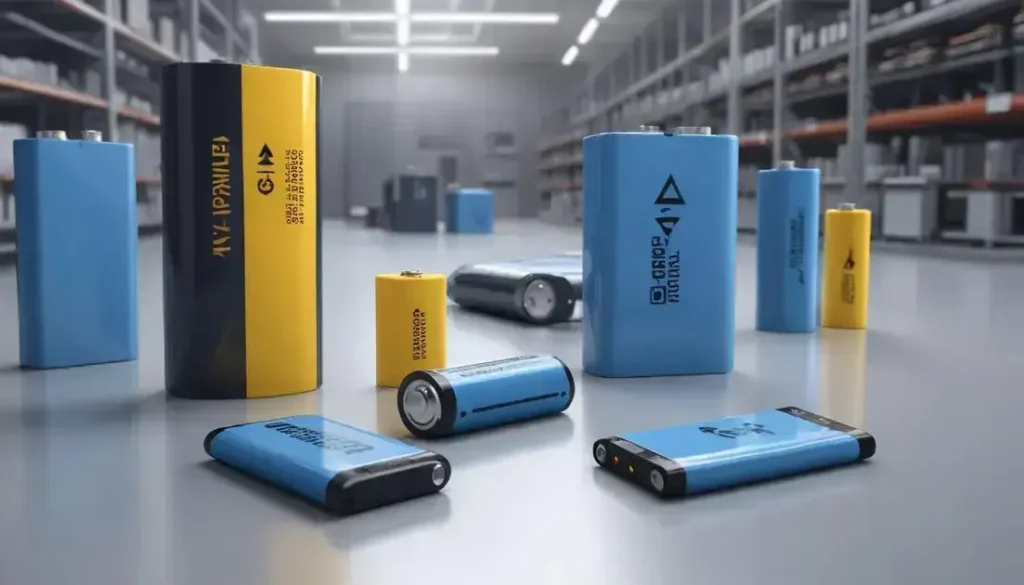Lamborghini is leading the luxury automotive industry towards sustainability by integrating hybrid technology, utilising renewable energy, and promoting sustainable materials to significantly reduce carbon emissions while maintaining high performance.
In its first Sustainability Report, Lamborghini outlines a commitment to a more sustainable future through hybrid vehicles. This shift has significant implications for businesses globally. Let’s explore what this means!
Overview of Lamborghini’s Sustainability Report
Lamborghini’s Sustainability Report marks a significant step towards environmental responsibility, showcasing their commitment to sustainable practices in the luxury automotive sector. The report highlights the ambitious goal of achieving climate neutrality by 2030, reflecting the brand’s dedication to reducing its carbon footprint.
Key elements of the report include a shift towards hybrid vehicle production, which aims to lower harmful emissions significantly. Lamborghini plans to invest heavily in green technologies and energy-efficient manufacturing processes. These initiatives not only align with global sustainability trends but also respond to the growing demand for eco-friendly luxury vehicles.
Additionally, the report details Lamborghini’s efforts in optimizing its supply chain. The company is committed to sourcing materials sustainably and minimising waste throughout their production process. This approach not only enhances their brand image but also creates a competitive advantage in an increasingly environmentally conscious market.
Community engagement is another focal point of the report, where Lamborghini outlines initiatives to support local communities through various environmental projects. The brand’s comprehensive strategy demonstrates a balanced approach to business and environmental stewardship, ensuring that their luxury products contribute positively to the planet.
Hybrid vehicle production rise
The rise of hybrid vehicle production represents a pivotal shift in the automotive industry, especially for manufacturers like Lamborghini. This transition is driven by the urgent need to reduce greenhouse gas emissions and meet rising environmental standards.
Hybrid vehicles combine traditional internal combustion engines with electric propulsion systems, offering greater fuel efficiency and lower emissions compared to conventional cars. As a result, Lamborghini is investing significantly in research and development to create models that not only retain their luxury appeal but also align with sustainability goals.
The adoption of hybrid technology allows Lamborghini to enhance performance while promoting eco-friendliness. These vehicles are designed to deliver exhilarating driving experiences without compromising on their environmental impact. This approach appeals to both eco-conscious consumers and traditional car enthusiasts.
With advancements in battery technology and electric motors, hybrid vehicles are becoming more accessible and practical for everyday use. Lamborghini’s focus on this segment demonstrates their commitment to innovation while addressing the growing demand for sustainable luxury. As competition heats up in the automotive market, embracing hybrid technology ensures Lamborghini remains at the forefront of both performance and environmental stewardship.
Impact of increased emissions
The impact of increased emissions from internal combustion engines is a growing concern in the automotive industry. As vehicle production rises, so does the urgency to address the environmental consequences of traditional fuel sources.
Emissions contribute significantly to air pollution and climate change, affecting public health and the environment. In response, Lamborghini is actively seeking to mitigate these impacts through innovative strategies and technologies. The company understands that transitioning to hybrid and electric models is essential for reducing overall emissions.
Increased emissions not only threaten environmental sustainability but also affect regulatory compliance. Governments around the world are implementing stricter emission standards, placing pressure on manufacturers to adapt swiftly. Failure to comply can result in financial penalties and damage to brand reputation, making it crucial for luxury brands like Lamborghini to prioritise sustainability.
As consumer preferences shift towards environmentally friendly vehicles, the impact of emissions becomes a pivotal factor in purchasing decisions. Lamborghini’s investment in hybrid technology signifies a commitment not just to performance but also to reducing the ecological footprint. The brand aims to lead the charge in redefining luxury through sustainability, making significant strides in the race towards cleaner transportation.
Initiatives to reduce Scope 3 emissions
Lamborghini is committed to addressing Scope 3 emissions, which encompass indirect emissions from its value chain. These emissions occur from sources not owned or controlled by the company, highlighting the need for comprehensive strategies to tackle this environmental challenge.
One initiative includes engaging with suppliers to promote sustainable practices throughout the supply chain. By collaborating closely with suppliers, Lamborghini aims to encourage the use of renewable materials and energy-efficient processes. This approach not only reduces emissions but also fosters a culture of sustainability among all partners.
Furthermore, Lamborghini is investing in lifecycle assessments to better understand the environmental impact of its products. By evaluating emissions from production to disposal, the company can identify areas for improvement and implement targeted strategies to reduce its overall carbon footprint.
Employee training and awareness programs are also crucial in Lamborghini’s efforts to mitigate Scope 3 emissions. By educating staff on sustainability practices, the brand fosters a sense of responsibility and encourages innovative ideas for reducing environmental impacts in everyday operations.
Through these initiatives, Lamborghini demonstrates its dedication to sustainability and climate action, aiming to lead the luxury automotive industry toward a greener future. This proactive approach not only enhances its brand reputation but also contributes significantly to global emission reduction goals.
Sustainable supply chain practices
Sustainable supply chain practices are essential for luxury brands like Lamborghini as they strive to minimise their environmental impact. By implementing eco-friendly measures, Lamborghini enhances its commitment to sustainability throughout its production cycles.
One significant approach involves collaborating closely with suppliers who prioritise renewable resources and ethical sourcing. By establishing strong partnerships, Lamborghini ensures that the materials used in their vehicles are obtained with minimal environmental disruption, promoting a green approach from the outset.
Additionally, Lamborghini employs lifecycle assessments to evaluate the environmental impact of each component. This comprehensive analysis helps identify areas where emissions can be reduced or waste can be minimised, allowing for a more sustainable production process. Such practices not only improve overall efficiency but also strengthen Lamborghini’s brand integrity.
Moreover, training programs for employees focus on sustainable practices within the supply chain. By fostering a culture of environmental awareness, Lamborghini encourages innovation in finding new ways to reduce waste and energy consumption across all operations.
These sustainable supply chain initiatives help Lamborghini maintain its status as a leader in the automotive industry while addressing the growing demand for environmentally responsible luxury products. This strategy highlights the importance of balancing business success with environmental stewardship.
Commitment to renewable energy
Lamborghini’s commitment to renewable energy is a cornerstone of its sustainability strategy, reflecting a strong desire to reduce environmental impacts associated with automotive production. The company is making substantial investments in renewable energy sources to power its manufacturing operations.
One key focus is on utilising solar energy. Lamborghini has installed solar panels at its facilities, significantly decreasing reliance on fossil fuels. This initiative not only reduces overall energy costs but also lowers carbon emissions associated with production processes.
Additionally, Lamborghini is exploring the integration of wind energy into its operations. Collaborating with energy providers, the brand aims to source clean energy that powers its factories and facilities, aligning with its goal of achieving climate neutrality by 2030.
Employee training programs are also part of the strategy, ensuring that staff understand the importance of renewable energy and their role in the transition. By fostering a culture that values sustainability, Lamborghini enhances its operational efficiency while promoting environmental responsibility.
By prioritising renewable energy, Lamborghini not only leads the way in the luxury automotive sector but also sets an example for the entire industry. This commitment underscores the brand’s dedication to innovation, performance, and a sustainable future.
Challenges in achieving climate neutrality
Achieving climate neutrality poses significant challenges for Lamborghini, as the luxury automotive brand navigates the complexities of sustainability in a highly competitive market. One of the primary hurdles is the need to overhaul existing manufacturing processes to minimise carbon emissions.
Transitioning from traditional production methods to sustainable alternatives requires substantial investment. This includes upgrading facilities, adopting renewable energy sources, and integrating advanced technologies. Such changes can be costly and time-consuming, but are essential for meeting target goals.
Another challenge is the reliance on a global supply chain, which often involves suppliers that may not prioritise sustainability. Ensuring that partners comply with environmental standards requires rigorous monitoring and collaboration. As Lamborghini strives to create a completely sustainable supply chain, developing strong relationships with suppliers is crucial.
Consumer expectations also present a challenge, as luxury automotive buyers increasingly demand high-performance vehicles that do not compromise on sustainability. Balancing performance with eco-friendly innovations requires continuous research and development, pushing Lamborghini to innovate while adhering to its brand image.
Despite these challenges, Lamborghini remains committed to overcoming obstacles by investing in sustainable technologies and practices. Their determination to achieve climate neutrality demonstrates a proactive approach to environmental responsibility within the automotive industry.
Lamborghini’s hybrid models explained
Lamborghini’s hybrid models represent a significant evolution in the brand’s commitment to blending performance with sustainability. The integration of hybrid technology allows these vehicles to deliver thrilling speeds while minimising environmental impact. Each model is meticulously designed to optimise both power and efficiency.
One of the standout features of Lamborghini’s hybrids is their use of electric motors alongside traditional combustion engines. This combination enhances acceleration and performance, providing an exhilarating driving experience without the typical emissions associated with high-performance vehicles. The hybrid system intelligently manages the use of electric power to maximise efficiency and reduce the overall carbon footprint.
For example, the Lamborghini Sián is a pioneering model that employs a supercapacitor instead of a conventional battery, enabling it to store energy and provide additional power on demand. This innovative approach pushes the boundaries of what is possible in a hybrid sports car, reinforcing Lamborghini’s position as a leader in automotive engineering.
Moreover, Lamborghini ensures that the hybrid models maintain the brand’s signature design language, with aggressive yet elegant lines that reflect the performance capabilities under the hood. As Lamborghini continues to evolve, these hybrid models not only meet modern environmental expectations but also uphold the legacy of luxury and performance that the brand embodies.
Global automotive sustainability trends
Global automotive sustainability trends are rapidly transforming the industry as manufacturers respond to increasing environmental concerns and regulatory demands. A significant trend is the shift toward electrification, with many companies investing heavily in electric vehicles (EVs) to reduce carbon emissions. This change is not just about compliance; it also reflects consumer demand for greener alternatives.
Another key trend is the emphasis on sustainable materials. Automakers are exploring the use of recycled and renewable resources in vehicle production. By sourcing materials ethically, companies can significantly lessen their environmental impact. This transition not only helps in sustainability efforts but also appeals to eco-conscious consumers looking for greener choices.
Additionally, advancements in manufacturing processes, such as the adoption of circular economy principles, are gaining traction. This approach ensures that materials are reused and recycled, minimising waste throughout a vehicle’s lifecycle. As a result, manufacturers are increasingly focused on designing vehicles that can be efficiently disassembled and repurposed.
Collaboration within the industry is also critical. Partnerships between automakers, technology providers, and environmental organisations are driving innovative solutions. Together, these entities aim to create a more sustainable future for the automotive sector, addressing the challenges posed by climate change while meeting consumer expectations for performance and luxury.
Future directions for Lamborghini’s eco-initiatives
Lamborghini’s future directions for eco-initiatives reflect an unwavering commitment to sustainable luxury. The brand aims to expand its portfolio of hybrid and electric models, further reducing its carbon footprint while retaining the performance and excitement synonymous with its vehicles. This evolution emphasizes the integration of cutting-edge technologies that promote both power and environmental responsibility.
One significant focus is innovation in battery technology. Lamborghini is exploring various energy storage solutions to enhance efficiency and reduce weight, ensuring that its high-performance standards are maintained. Investing in next-generation batteries will allow for longer ranges and quicker charging times, making electric models more appealing to consumers.
Additionally, Lamborghini plans to enhance its manufacturing processes by implementing closed-loop systems. This approach minimizes waste and promotes recycling and reusing materials during production. By striving for a circular economy, Lamborghini can significantly decrease its environmental impact while promoting sustainability throughout the value chain.
Collaboration with industry partners is also crucial in Lamborghini’s sustainability journey. By working alongside other automakers, suppliers, and environmental organizations, Lamborghini aims to develop industry-wide best practices and share innovations that further the goal of a greener automotive landscape.
Through these initiatives, Lamborghini seeks not only to lead in performance but also to set a benchmark for sustainability in the luxury automotive market, ensuring a lasting legacy for future generations.
In Conclusion: Lamborghini and Sustainability
Lamborghini is taking significant strides towards a sustainable future by embracing eco-initiatives and hybrid technology. The brand is committed to maintaining its high-performance standards while reducing its environmental impact.
Through innovations in battery technology, enhanced manufacturing processes, and collaboration with industry partners, Lamborghini is setting a strong example in the luxury automotive market. Their focus on sustainable luxury ensures that they can meet consumer demands while being environmentally responsible.
As Lamborghini continues to lead the way, it not only reinforces its legacy of excellence but also contributes to a greener future for the automotive industry. By prioritising sustainability, Lamborghini proves that luxury and ecological responsibility can go hand in hand.
Frequently Asked Questions
What steps is Lamborghini taking towards sustainability?
Lamborghini is focusing on hybrid technology, renewable energy, and sustainable materials in their manufacturing processes.
How does hybrid technology benefit luxury vehicles?
Hybrid technology allows for high performance while significantly reducing carbon emissions, aligning luxury with environmental responsibility.
What challenges does Lamborghini face in achieving climate neutrality?
Challenges include upgrading existing manufacturing processes, ensuring supplier compliance, and meeting consumer expectations for performance.
What are the benefits of using sustainable materials?
Using sustainable materials reduces environmental impact, supports ethical sourcing, and appeals to eco-conscious consumers.
How is Lamborghini innovating battery technology?
Lamborghini is exploring next-generation batteries to enhance efficiency, reduce weight, and improve driving range for electric vehicles.
Why is collaboration important for Lamborghini’s eco-initiatives?
Collaboration with suppliers and industry partners helps share innovations and establish best practices to drive sustainability in the automotive sector.


